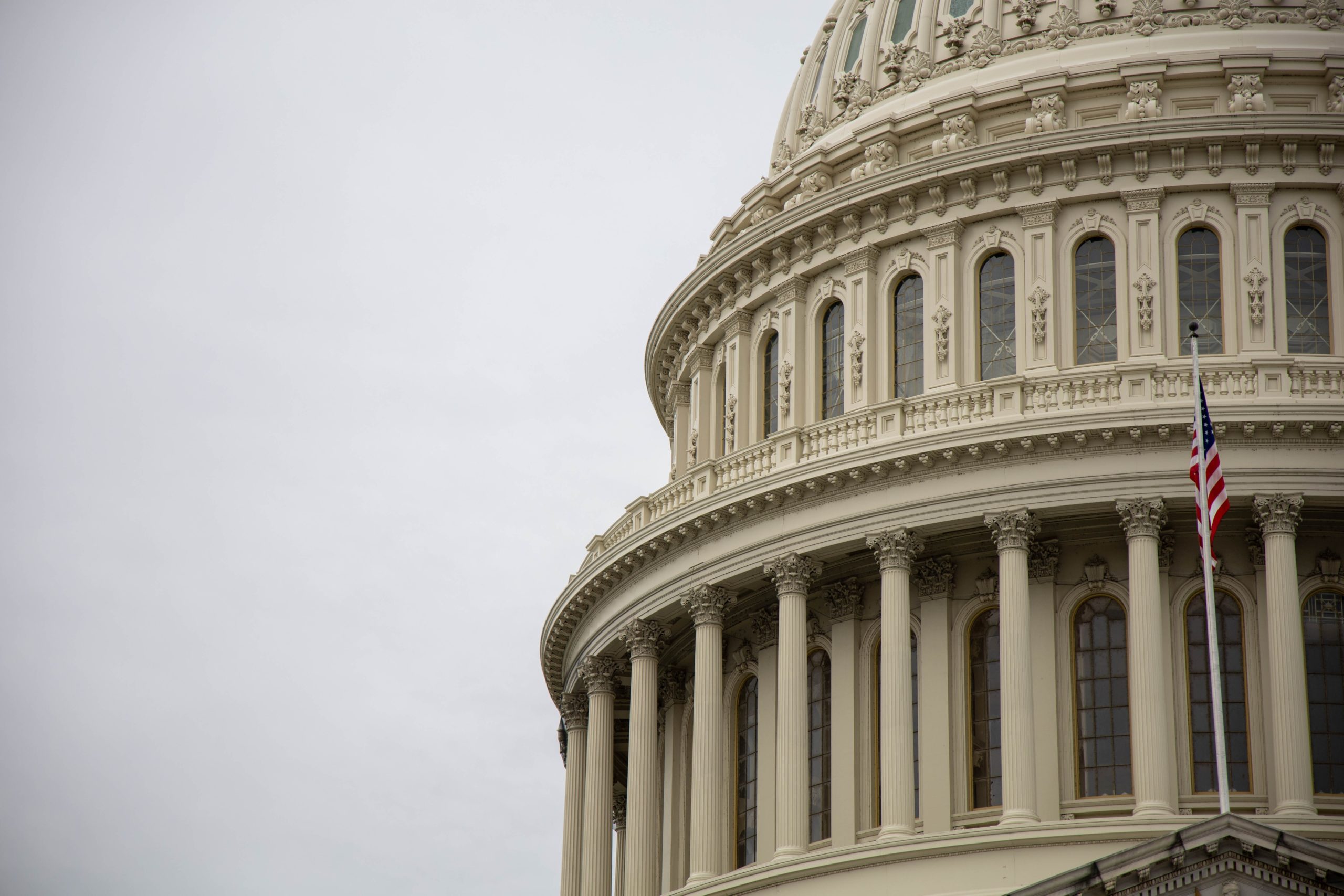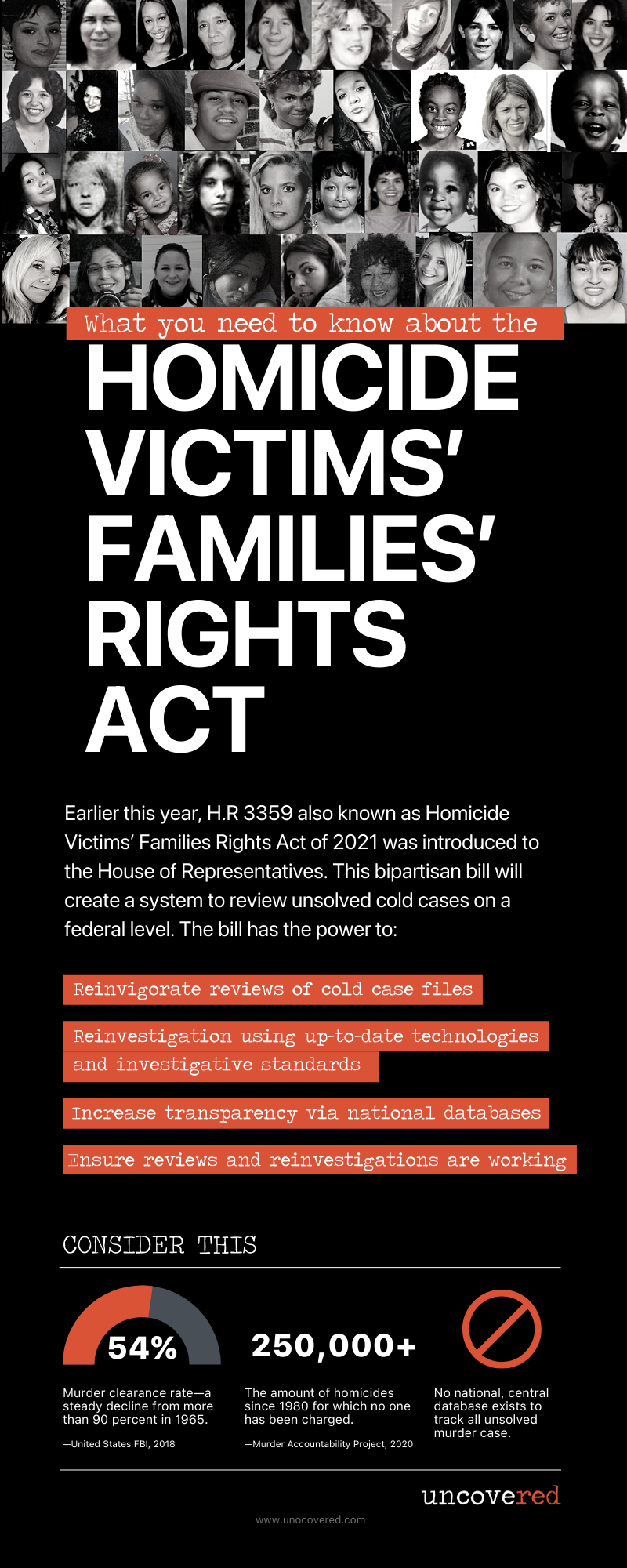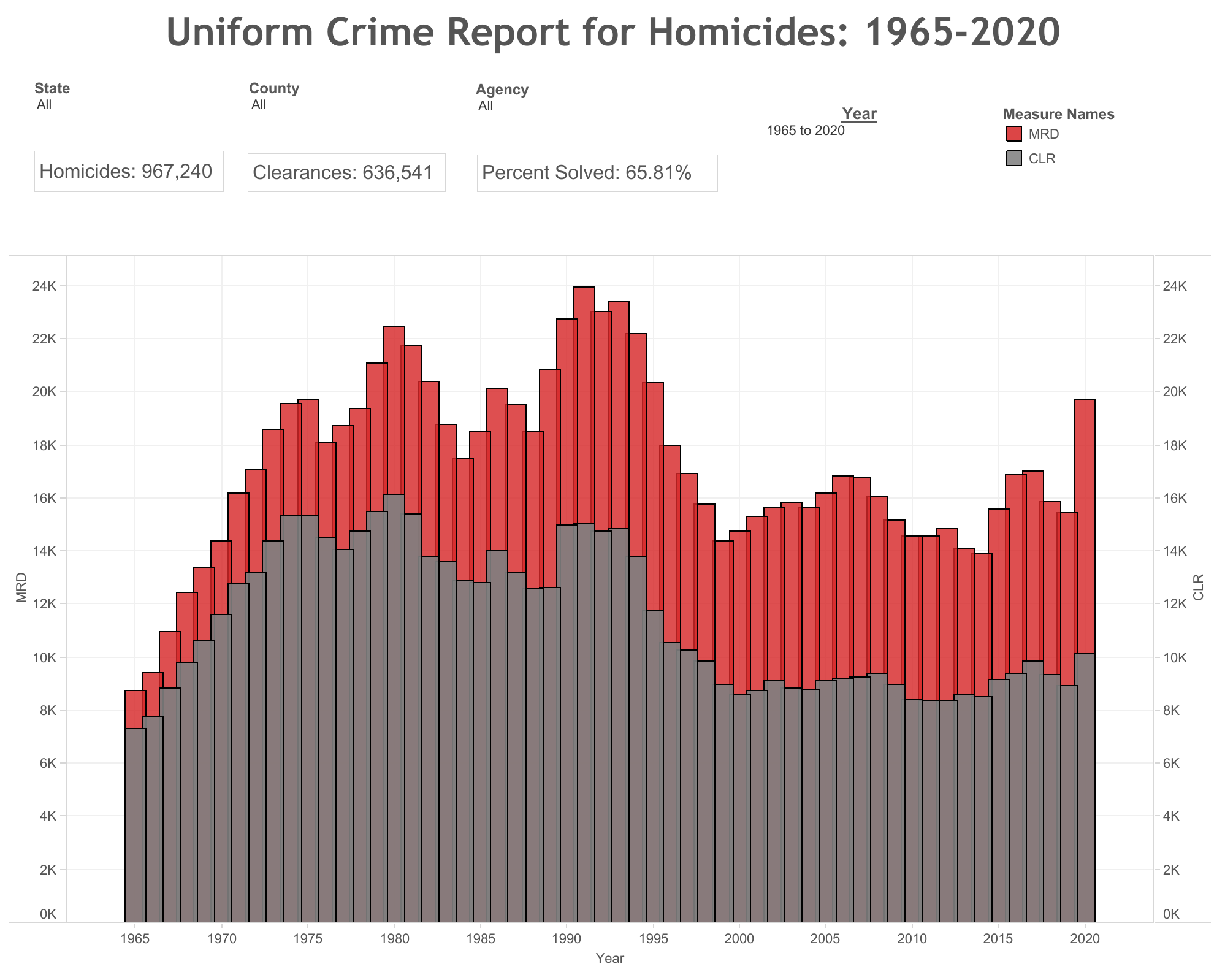AUGUST 4, 2022 UPDATE: President Joe Biden signed H.R. 3359 into law! This will transform how unsolved cases will be handled. Not only that, but this is a monumental win for families and case advocates — and it’s proof that together, we can help clear the unsolved case backlog!
On May 19th, 2021, H.R 3359 also known as the Homicide Victims’ Families Rights Act of 2021 (HVFRA) was introduced to the House of Representatives. This bill is bipartisan, with the intention of having a system in place to review cold case files on a federal level. The collective goal is to provide both law enforcement and victim families with the tools and resources to solve these cases.
The bill, co-sponsored by Representative Eric Swalwell of California and Representative Michael T. McCaul of Texas, was recently passed through the judiciary committee, sending the bill to the House Floor for consideration. However, there is still more work to be done.
“As a former prosecutor, I saw first-hand the unimaginable tragedy of losing a loved one to homicide. Accountability is crucial to begin the healing process and to get justice, and when families miss out on that opportunity, it is a massive failure of our systems. We must do more to give those families—who have already been through so much—the closure they deserve,” Rep Swalwell said.

How does it work?
Essentially, the HVFRA aims to assist families of homicide victims in four simple ways:
A request: After three years a case goes cold, meaning all leads have been examined and no identifiable suspect has been determined a family member can request a full review of the case.
A full reinvestigation: Upon review of the case, a full investigation would take place to ensure that every component is investigated. This includes but is not limited to: a new detective being assigned to the case, reinterviewing all people of interest and witnesses, retesting all forensic evidence with current modern forensic technology.
Increases transparency and accountability: The National Institute of Justice will publish detailed statistics on cold cases organized by type of crime and agency. Looking forward, this information will allow law enforcement agencies to better identify crime trends and new leads.
Federal Accountability: At the federal level, law enforcement agencies will be required to provide Congress with annual reports on investigative trends to ensure that families are receiving the best possible review of their loved ones’ cases.
You can read the entirety of the bill here.
Why is this important?
When a person is murdered and that case goes cold, the impact goes beyond the victim, but to their families and their respective communities. This bill would provide families with access to resources. Oftentimes, when a case goes cold it can be for a myriad of reasons: lack of leads, lack of available technology, etc. However, by granting the families an opportunity to work with a dedicated law enforcement officer who has not previously worked on the case, a new eye can provide new insight and connections with the hopes of breaking a case. For most, that means utilizing current DNA technology.
Genetic genealogy has made phenomenal improvements in recent years. Perhaps the best example is the Golden State Killer, who was a serial killer, burglar, and rapist at large from 1974 to 1986. In 2018, law enforcement entered his DNA to GEDmatch. Officials found twenty relatives who shared the same distant family member and were able to narrow it down to two individuals, before ultimately identifying the perpetrator.
According to the Murder Accountability Project, there were 19,719 homicides throughout the United States in 2020. Within that number, only 10,114 homicides were cleared. The term ‘clearance’ implies that a suspect was identified and ultimately charged. It doesn’t account for convictions. Regardless, the overall murder clearance rate is declining. The bar graph below illustrates the murder and clearance rates from 1965 thru 2020.
Why does it matter?
There are currently over 250,000 cold cases throughout the United States, and it is estimated that approximately 5,000 cases are added to that figure each year.

There are numerous organizations supporting this bill such as: Project Cold Case, the National Coalition Against Domestic Violence, the American Investigative Society of Cold Cases, Parents of Murdered Children, the National Association for Victim Assistance, Murder Accountability Project, Homicide Family Advocates, and Uncovered.
What you can do to help
Social pressure is real! As constituents, the best tool we have is our voice and it’s essential to use it effectively. Angel Turner, sister of Georgia Lee Moses is a fierce advocate for her sister’s case and has publicly stated her support for such a bill.
As a former prosecutor, I’ve seen the pain that families endure when there are no answers & no justice in a homicide case. That’s why today I reintroduced the bipartisan Homicide Victims’ Families Rights Act w/ @RepMcCaul to aid more people like Angel Turner. Listen to her story: pic.twitter.com/3xnNx1SteE
— Rep. Eric Swalwell (@RepSwalwell) May 19, 2021
Start by educating yourself on the bill and having conversations about HVFRA with people in your own circles as well as online. Contact your local representatives and congresspeople and tell them why this bill is important to you. What cases are you passionate about that would benefit from a bill like this?
Uncovered has created the Digital Advocacy Center space to provide tools and resources to help families who are still actively seeking justice for their loved ones. These resources enable families to better utilize social media, create effective online petitions and media campaigns and so much more.

